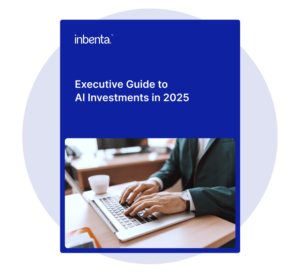Explore how artificial intelligence (AI) has become essential for businesses looking to enhance customer experiences, streamline operations, and foster growth. This article provides practical steps for strategically integrating AI into your business.
Artificial intelligence (AI) has emerged as a critical tool for companies aiming to enhance customer experiences, streamline operations, and drive growth. With numerous AI solutions available, determining where to start can be challenging. This guide offers practical advice to help your business integrate AI effectively and strategically.
1. Identify repetitive and manual processes for automation.
First, analyze your customer service processes to identify manual and repetitive tasks that could benefit from AI automation. This could include responding to frequently asked questions, processing routine inquiries, or gathering customer data.
2. Understand customer behavior.
It’s crucial to know where AI can have the most significant impact on the customer journey. Analyzing customer data, feedback, and interactions will reveal insights that let you to tailor your AI implementation strategy to address pain points and enhance the overall customer experience.
3. Choose the right AI tool for the job.
After identifying the processes to automate, it’s time to evaluate whether or not the tool you’re considering offers the features you need.
Consider the following factors:
- Integrations: Can the tool integrate with your existing platforms and systems, such as CRMs and helpdesk systems?
- AI/ML capabilities: Does the tool have robust Natural Language Processing (NLP) to understand and accurately process customer inquiries?
- User experience: Is the tool user-friendly for customers and customer service agents?
- Scalability: Can the tool scale to handle large volumes of customer interactions without compromising performance?
- Data security: Does the tool adhere to industry-standard security protocols to protect customer data?
4. Integrate and conduct pilot projects.
Start the integration with a focused approach. Being in a specific area and conduct a pilot to measure its effectiveness. This lets you assess how the AI performs and make necessary adjustments before a large-scale deployment.
5. Scale and improve.
Once the pilot is successful, gradually expand your AI implementation into other customer service processes, such as handling more complex requests, engaging customers proactively, and offering personalized recommendations.
Embarking on an AI journey doesn’t need to be daunting. By following a few basic steps and partnering with a trusted AI provider like Inbenta, your business can leverage AI to deliver an exceptional customer experience and succeed well into the future.
In Brief:
- Analyze Processes: Identify manual tasks for AI automation.
- Customer Insights: Use data to understand and improve the customer journey.
- Select AI Tools: Choose solutions that align with your business needs.
- Pilot and Integrate: Test AI solutions in controlled settings before full implementation.
- Expand and Optimize: Scale AI use across different areas of your business for continued improvement.











